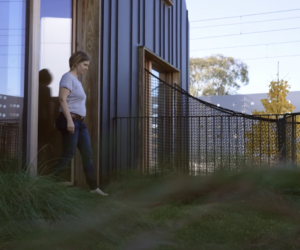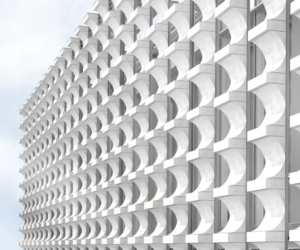Circularity presented by RMIT, Polestar and Green Magazine – Clay Coral
“Circularity: Materials + Form” will run from June 27-29th in Fitzroy, Melbourne, showcasing projects from the RMIT Master of Architecture Design Studio and Research Elective
Clay Coral from RMIT Architecture on Vimeo.
Clay is one of the world’s oldest materials, and evidence of its malleability and utility precede recorded human history. Yet, current manufacturing processes for the substance rely on brick kilns that create 8000 tonnes of C02 annually.
The brick-making process is not only incredibly harmful to our environment but negates the benefits of clay’s plasticity.
By using 3D-printing extrusion techniques for the clay instead, the pavilion completely eliminates these C02 emissions. Further the wobbling, twisting form of the pavilion takes advantage of the 3D printer’s ability to move in any direction, thus minimising material waste as there are no rigid finish points for the machine.
Coincidentally, the uneven surface that benefits the capabilities of a 3D printer equally benefits coral and seaweed growth. By providing nooks and crannies of various sizes and directions across its surface, the pavilion provides ideal respite from ocean currents and predators that lower a coral spores chance of growing to maturity. Additionally, the porosity of the clay used makes an ideal base for spores and small flora to latch onto and grow against.
So, when placed underwater, the pavilion’s material and construction create almost ideal conditions for coral and other flora growth. When placed on land, it serves as an important reminder to the people experiencing it, raising awareness for the state of our oceans.
STELLA NORTHEAST & ANNA POLOK


